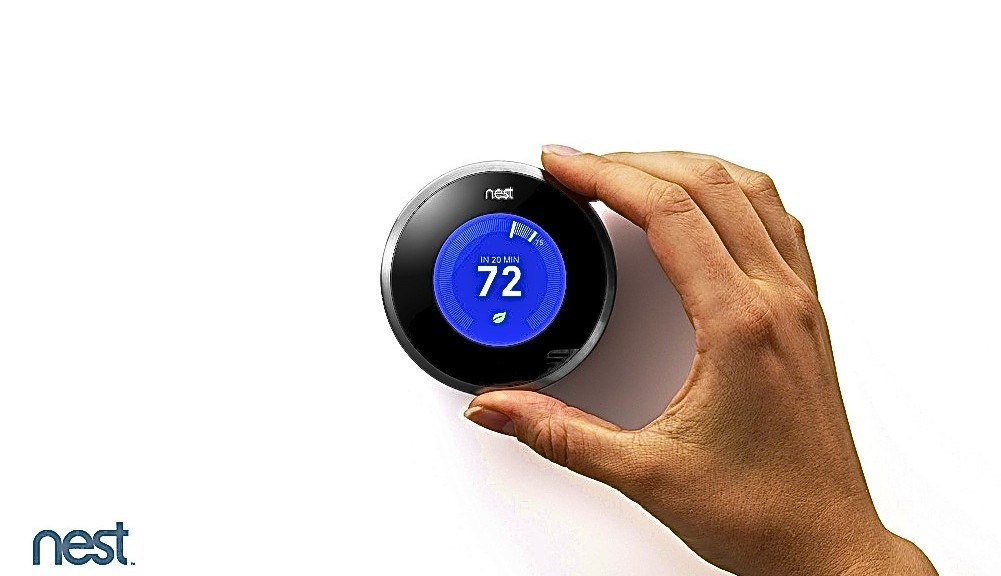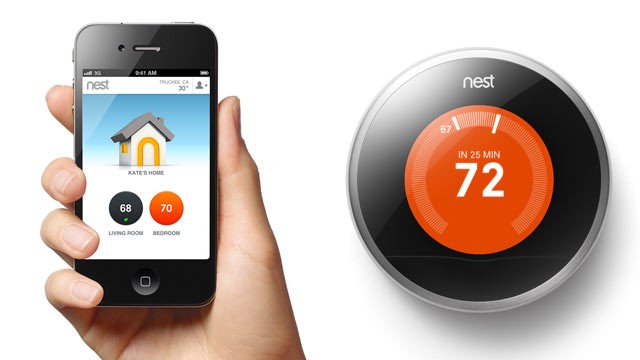
While at Home Depot recently, I stumbled upon a chic looking gadget called the Nest Thermostat—and it was love at first sight.
Nest Thermostat
Positives:
Apparently your thermostat controls half of your home’s energy. Crazy, right? That means your thermostat controls more energy than your appliances, lighting, TVs, computers, and stereos combined. Unfortunately, letting the cool air pump while your away at work really does effect your electricity bill. So, how is this fancy circular apparatus going to change that for you? Well, like seemingly everything now-a-days, this thermostat has a mobile app so you can alter the temperature settings based on your schedule.

Show of hands, who currently has their thermostat programmed ? I know I don’t, but unfortunately not programming your thermostat could be wasting you almost $173 a year. At first, $173 a year doesn’t seem like a lot, but when you think about it, that’s $865 in savings in 5 years. A genius and aesthetically-pleasing thermostat can save me a grand in six years—sign me up, right? Not so fast. Nest thermostats are still relatively new and could be about as reliable as the first few generations of Android cellphones.
If you have animals, you know that your air filter is a magnet for their hair, but what you may not know is that clouded air filters can actually cost you 5% more on energy bills. Even worse, if you forget to change your filter when its due, the unit could freeze up, which means no air flow for you for the duration of the melting process. The Nest can sense the flow of air and notifies you when your filter needs changing. This can help to cut down on allergens and wasted energy. Even more, you won’t have to sit in your home with sweaters and blankets for 48 hours of your life – I only know this from experience.
Negatives:
I researched a few tech blogs and yes, Amazon reviews, and came to the conclusion that while amazing in theory, this little guy just isn’t ready to be the next super gadget. Many people have come home or been woken up to temperature extremes comparable to both a hot yoga studio and a Boulder, Colorado ski lift. Not only is having to restart and reprogram the sucker frustrating, but some buyers’ experiences have been down right dangerous. One man said he came home to a clinging sound in his basement. Upon investigation, he found his boiler running fiercely, as if it were overheating. Many have also reported that their thermostat was hot to the touch, much like a cell phone or computer after prolonged use. The first image that comes to mind is the message my iPhone gives me after I’ve accidentally left it in the sun.

I don’t need the same effect to occur with a system responsible for the function and welfare of my home.
The common consensus is that when it works, it is worth every penny, but it seems to wreak more havoc than actually do its duty. In theory, this charming little device is easy, convenient, and good for both our pocket and the environment, but unfortunately, it doesn’t seem to be glitch free just yet. Google recently purchased the company that produces the Nest. Whether the purchase of energy-controlling gadgets by a mega information technology company is a good or bad thing is up to you to decide. I don’t want to get into that debate.


